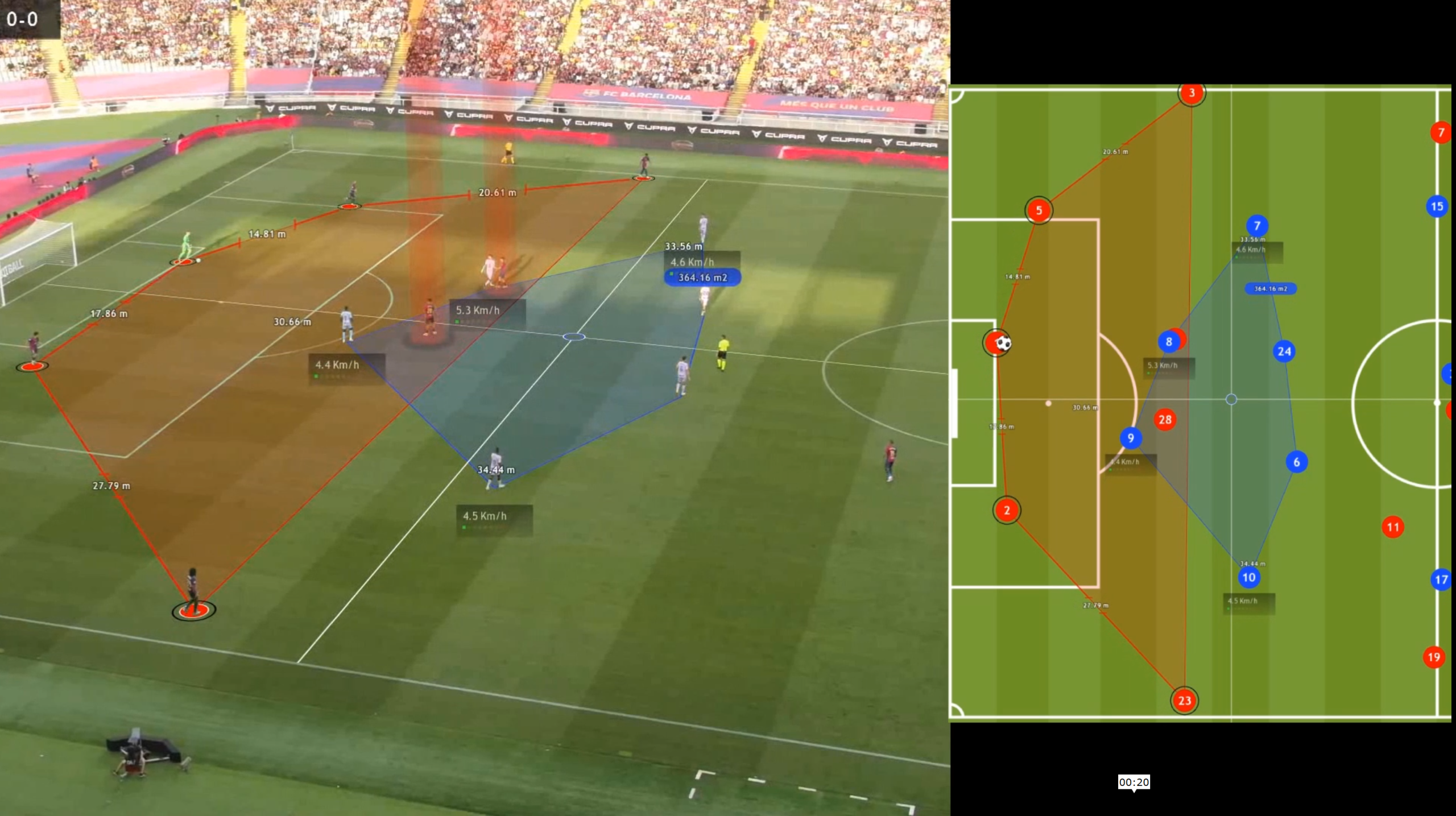
04 Oct Keys to Mastering Pressing and Playing Out from the Back in the Modern Game
In today’s football, playing out from the back and pressing the opponent during this phase are decisive moments that directly influence the game. At LALIGA, we’ve developed an analysis model that provides coaches with tools to improve both the effectiveness of pressing the opponent’s build-up and overcoming pressure when playing out from our own goal. Here, we show you how to apply the results of this research directly to training sessions and match strategies.
Objective of the Analysis: This model is designed to enhance coaches’ decision-making in two key scenarios:
- Effectively pressing the opponent’s build-up.
- Overcoming pressure when playing out from the back.
Key factors for training pressing and playing out:
- Team formations: Understanding the opponent’s formation allows you to adjust your strategy. A 4-4-2, for example, may leave space on the flanks. Training scenarios that simulate how your team breaks this type of pressure will better prepare you for competition.
- Average defensive line height and goalkeeper positioning: If the opponent pushes their defensive line high, there’s more room for long passes and runs in behind. Create drills where your players learn to recognize when to exploit this space and when to keep possession with short passes. The average defensive line height and the goalkeeper’s position are key; if the keeper is advanced, they may be vulnerable to long balls or quick switches of play.
- Global and partial Convex Hull: This metric analyzes how players are spread across the field. If the pressing team is tightly packed, they may block your passing lanes; if they are more spread out, there’s more space to play into. Train your team’s movement and spatial awareness to overcome compact pressing structures. Convex Hull analysis helps identify which players are most involved in the first line of pressing, allowing you to adjust your strategy to avoid those areas.
- Voronoi analysis: This space-based metric shows which players have the most direct access to the ball. Train your players to occupy free spaces more effectively, creating safer passing options and increasing the chances of bypassing the opponent’s first line of press. The Voronoi analysis also helps you see if the spaces between lines are well-distributed or if there are gaps to exploit.
- Distance to the ball: The closer the pressing players are to the ball, the harder it will be to play out. Plan drills where players learn to move and position themselves quickly to avoid immediate pressure. This metric is key to training your players to adjust their positioning, depending on the distance of opponents to the ball.
- Ball speed and the speed of pressing players: The speed at which the ball is circulated and the intensity of the opponent’s press are crucial factors. Increasing ball circulation speed in training helps prevent the opposition from adjusting their press, while understanding the pressing speed of your opponents tells you when to play long or short. Training with varying ball speeds helps prepare your players for different pressing situations.
How to identify vulnerable players under pressure:
Our model also identifies opposing players who are more likely to make mistakes under pressure. Key metrics we use to determine which player to direct pressure towards include:
- Ball losses under pressure.
- Failed long passes under pressure.
- Pass completion rate under pressure.
- Lost duels.
Additional metrics to deepen individual analysis:
- Average reaction time under pressure: This metric helps you train players to make quicker decisions when under pressure, especially in critical positions.
- Ball losses due to poor reception: Analyze which players struggle technically under pressure and focus your pressing on them.
- Successful recoveries after losing the ball: Measure how often an opponent can recover possession after losing it and adjust your strategy to maximize recoveries in dangerous areas.
- Forced errors: Identify how many mistakes a player makes due to pressure, allowing you to adjust the intensity of your press accordingly.
- Blocked progression: Measure a player’s ability to advance the ball under pressure, helping you understand when a rival player is more vulnerable to losing possession or making errors.
Practical applications in training and competition:
- Use ball speed data and space occupation analysis to design drills that simulate real pressing and build-up situations.
- Plan training matches where players must overcome different types of pressure, replicating the intensity and movements of the opposition.
- Identify weaknesses in the opposing team to know when and how to press, increasing the chances of forcing errors from players who are more vulnerable under pressure.
Conclusion: The model developed by LALIGA provides a competitive advantage for planning training sessions more precisely and adjusting strategies during competition. By understanding how pressing and playing out from the back work in the modern game, you can better prepare your players to handle these critical moments on the pitch.


